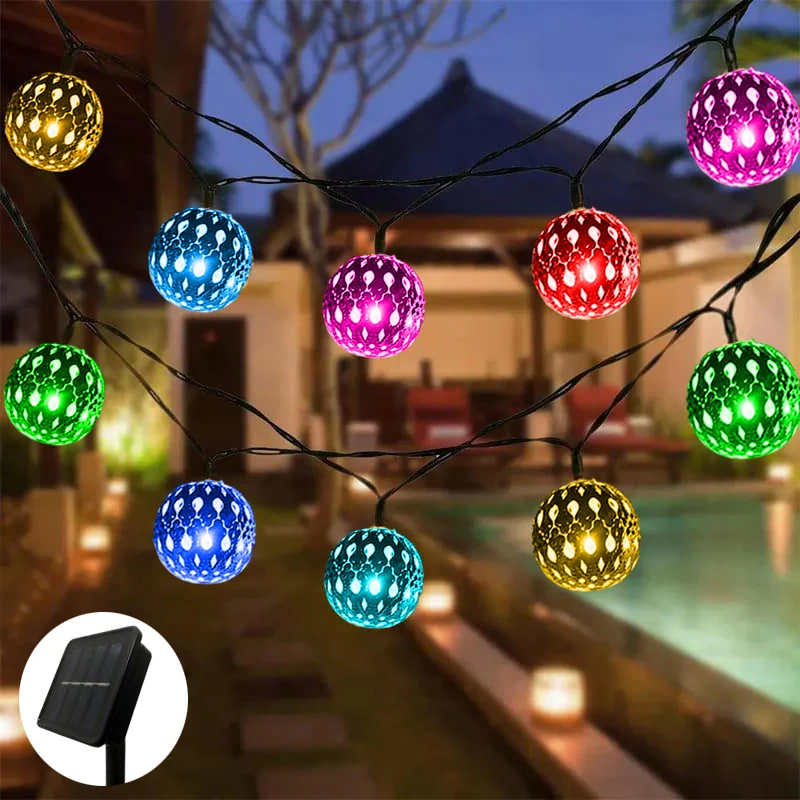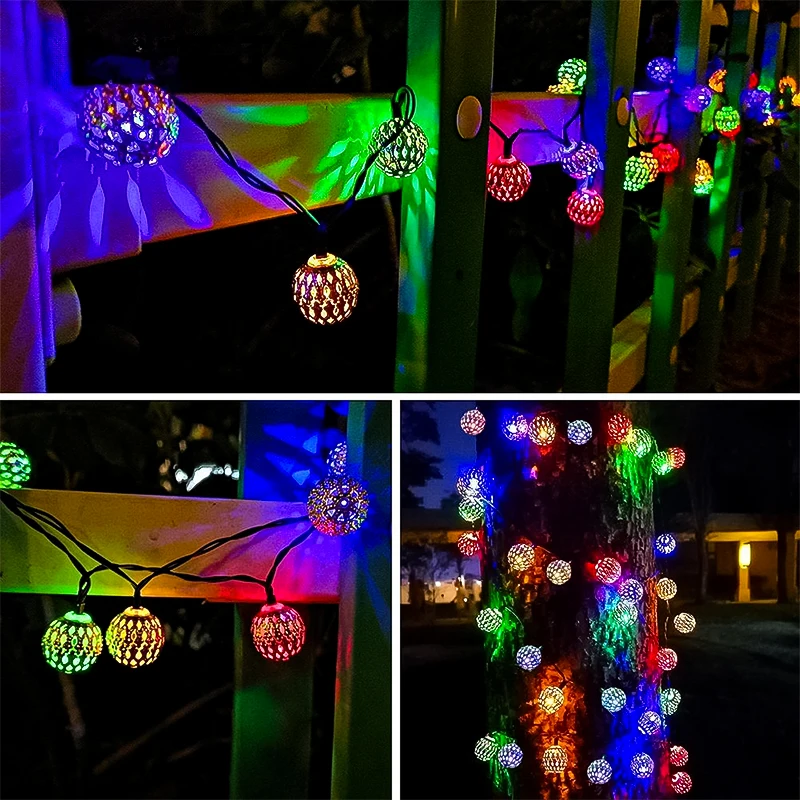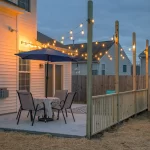Outdoor string lights can add a magical flair to your backyard, patio, or any outdoor space, creating an inviting atmosphere for gatherings, celebrations, or cozy evenings alone. However, what happens when your cherished string lights fail to shine? The annoyance of outdoor string lights not working can be a significant inconvenience. Whether it’s a faulty bulb, electrical issue, or weather-related damage, let’s explore some troubleshooting tips to bring back the glow to your outdoor oasis.
Understanding the Basics of Your Outdoor String Lights
Before diving into troubleshooting, it’s crucial to understand how outdoor string lights are designed to work. Typically, these lights consist of a series of bulbs wired together, connected to a power source. Depending on the type, they may use incandescent, LED, or solar-powered bulbs. Incandescent bulbs are generally less energy-efficient and prone to burnout, whereas LEDs typically last longer and consume less energy. Solar-powered options rely on sunlight absorption during the day, making them more sustainable but sensitive to environmental factors.
Understanding your string lights’ configuration, whether they’re on a timer or connected to a dimmer switch, is important. Some strands are designed to connect in series, meaning if one bulb goes out, the entire string may stop working. This knowledge is crucial when it comes time to troubleshoot. Additionally, knowing whether your lights are rated for outdoor use is essential. Using indoor-rated lights outdoors can lead to malfunction due to exposure to moisture, temperature fluctuations, and other environmental challenges.

Check the Power Source First
When outdoor string lights are not working, the first step is to inspect the power source. Make sure that the outlet or extension cord is firmly connected and not damaged. Sometimes, the simplest explanation is the correct one. If your string lights are plugged into an outlet, verify that the outlet is functioning by testing another device. If you’re using an extension cord, ensure that it’s rated for outdoor use, is intact, and capable of handling the load. Damaged cords and frayed wires can often be the culprit of electrical failures.
If your lights are hardwired or plugged into a junction box, check for tripped circuit breakers. It’s common for outdoor circuits to overload, especially if you have multiple devices connected. Resetting a tripped breaker may restore power to your lights. Additionally, if your string lights are equipped with a timer or remote control, ensure that the settings are correctly configured, as any mishaps in programming can lead to the appearance that they’re not functioning.
Inspect the Bulbs and Connections
Once you’ve ensured that the power source is functioning, it’s time to evaluate the bulbs themselves. In many cases, a burned-out bulb can hinder the operation of the entire strand, particularly for series-connected lights. Start by inspecting each bulb for any visible signs of damage, such as blackened filaments or broken glass. If you find a burnt-out bulb, replace it with a new one that matches the wattage and type to avoid further issues.
For LED string lights, a single bulb going out should not impact the entire strand. However, it’s worth checking for loose connections or misaligned sockets. Gently wiggle the bulbs in their sockets to ensure they are seated properly. Loose bulbs may not make sufficient contact with the electrical circuit. Moreover, dirty or corroded sockets can hinder proper connections. Use electrical contact cleaner to remove any grime or oxidation from the bulb sockets, ensuring a clean and reliable connection.
Look for Damage in Wires and Connectors
When outdoor string lights are not functioning properly, examining the wires and connectors is essential. Insulation could wear down over time, exposing the wires underneath. Look for signs of fraying, cracking, or cuts in the wire. If you notice any exposed electrical wires or damage that could compromise safety, it’s essential to replace the entire string rather than attempt a risky repair.
Additionally, check the connectors between each section of bulbs if your string lights are connectable in sections. Like wires, connectors can also wear down and may not make a sufficient electrical connection. If connectors damage, you may be able to replace only that segment of the string rather than the entire setup. An important note is to ensure that all repairs and inspections are performed while the string lights are unplugged to avoid electrical hazards.
Check for Environmental Causes of Malfunction
Outdoor string lights face various environmental challenges that can contribute to them not working. Moisture, extreme temperatures, and wind can all take a toll on their reliability. If your string lights have expose to considerable rain or snow, check for water damage. Electrical components can short-circuit when exposed to excessive moisture, leading to complete failure. If you live in an area that experiences harsh weather, review the specifications to ensure your lights are rated for outdoor use and are weatherproof.
Additionally, if your string lights place in areas where they may be subject to heavy winds or physical damage, consider relocating them or reinforcing their installation. Check for any broken or bent poles or supports that could cause the lights to sag or become disconnected. Sometimes a simple adjustment or relocation can prevent further exposure to elements that cause deterioration and enhance their longevity.

Assess the Timer or Smart Features
Many contemporary outdoor string lights come equipped with timers, smart features, or remote controls that allow you to automate your lighting experience. Unfortunately, these advanced functionalities can sometimes cause confusion, making it seem like the lights are not working when in reality, they are merely following pre-set instructions. If your lights come equipped with a timer, check the settings to ensure they appropriately programm to turn on and off at the right times.
For string lights with smart capabilities, ensure that your Wi-Fi connection is stable if they require internet access for functionality. Confirm that the mobile app controlling the lights update and functioning correctly. Sometimes, unexpected software glitches can affect the operation of smart string lights, necessitating a reset or reconfiguration of the connection. Take the time to consult the product manual for specific troubleshooting tips related to the timer or smart features, as these may vary from one brand to another.
Consider Replacement Options
If you’ve tried numerous troubleshooting techniques and your outdoor string lights remain non-functional, it might be time to consider replacement options. Before making a purchase, evaluate what features and specifications are most important to you. Perhaps you want better energy efficiency, brighter lights, or additional decorative options. There are myriad styles—from traditional incandescent strands to vibrant, color-changing LEDs—that can fulfill your decorative needs while enhancing the ambiance of your outdoor space.
When purchasing new string lights, always check for weatherproof ratings, as these specifications will ensure your new lights can withstand the elements. Investing in higher-quality, more durable options may cost more upfront but can save you money in the long run by reducing the frequency of replacements. Additionally, keep an eye out for warranty options; many manufacturers offer warranties that can cover repairs or replacements should issues arise within a specified period.

Conclusion: Bringing Back the Glow
Dealing with outdoor string lights not working can be frustrating, especially when you’re eager to create an inviting atmosphere for gatherings or special occasions. By understanding the basic structure and operational principles of your lights, checking the power source, inspecting bulbs and wires, and considering environmental factors, you can often pinpoint the issue and resolve it yourself.
Whether you opt for troubleshooting or decide to invest in new string lights, your outdoor space shouldn’t remain dim for long! Remember, the goal is to create a welcoming environment that reflects your personal style, and outdoor string lights can significantly enhance that experience. So go ahead and take the necessary steps to bring back the sparkle—your outdoor oasis awaits!


